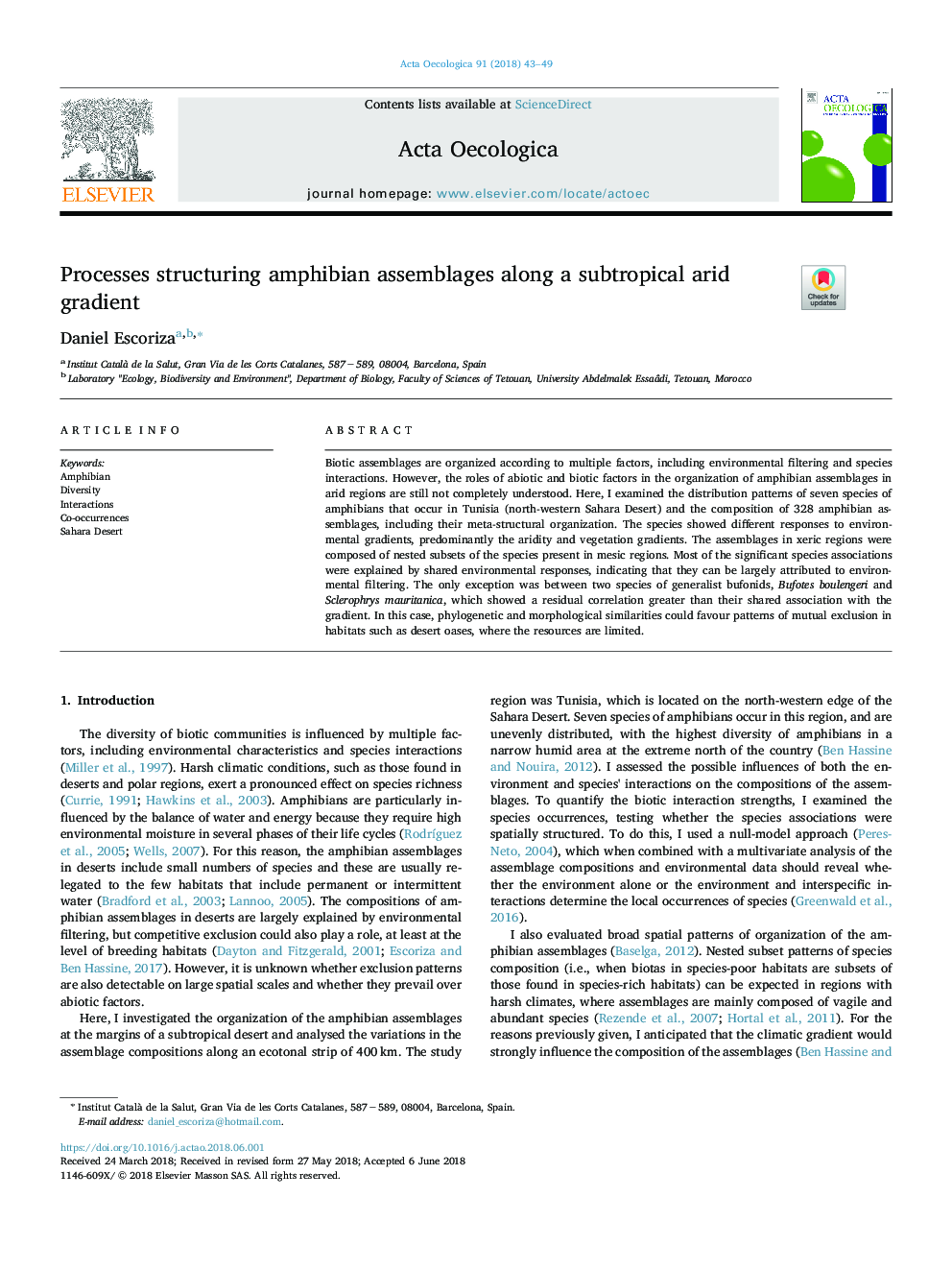| Article ID | Journal | Published Year | Pages | File Type |
|---|---|---|---|---|
| 8846450 | Acta Oecologica | 2018 | 7 Pages |
Abstract
Biotic assemblages are organized according to multiple factors, including environmental filtering and species interactions. However, the roles of abiotic and biotic factors in the organization of amphibian assemblages in arid regions are still not completely understood. Here, I examined the distribution patterns of seven species of amphibians that occur in Tunisia (north-western Sahara Desert) and the composition of 328 amphibian assemblages, including their meta-structural organization. The species showed different responses to environmental gradients, predominantly the aridity and vegetation gradients. The assemblages in xeric regions were composed of nested subsets of the species present in mesic regions. Most of the significant species associations were explained by shared environmental responses, indicating that they can be largely attributed to environmental filtering. The only exception was between two species of generalist bufonids, Bufotes boulengeri and Sclerophrys mauritanica, which showed a residual correlation greater than their shared association with the gradient. In this case, phylogenetic and morphological similarities could favour patterns of mutual exclusion in habitats such as desert oases, where the resources are limited.
Related Topics
Life Sciences
Agricultural and Biological Sciences
Ecology, Evolution, Behavior and Systematics
Authors
Daniel Escoriza,
